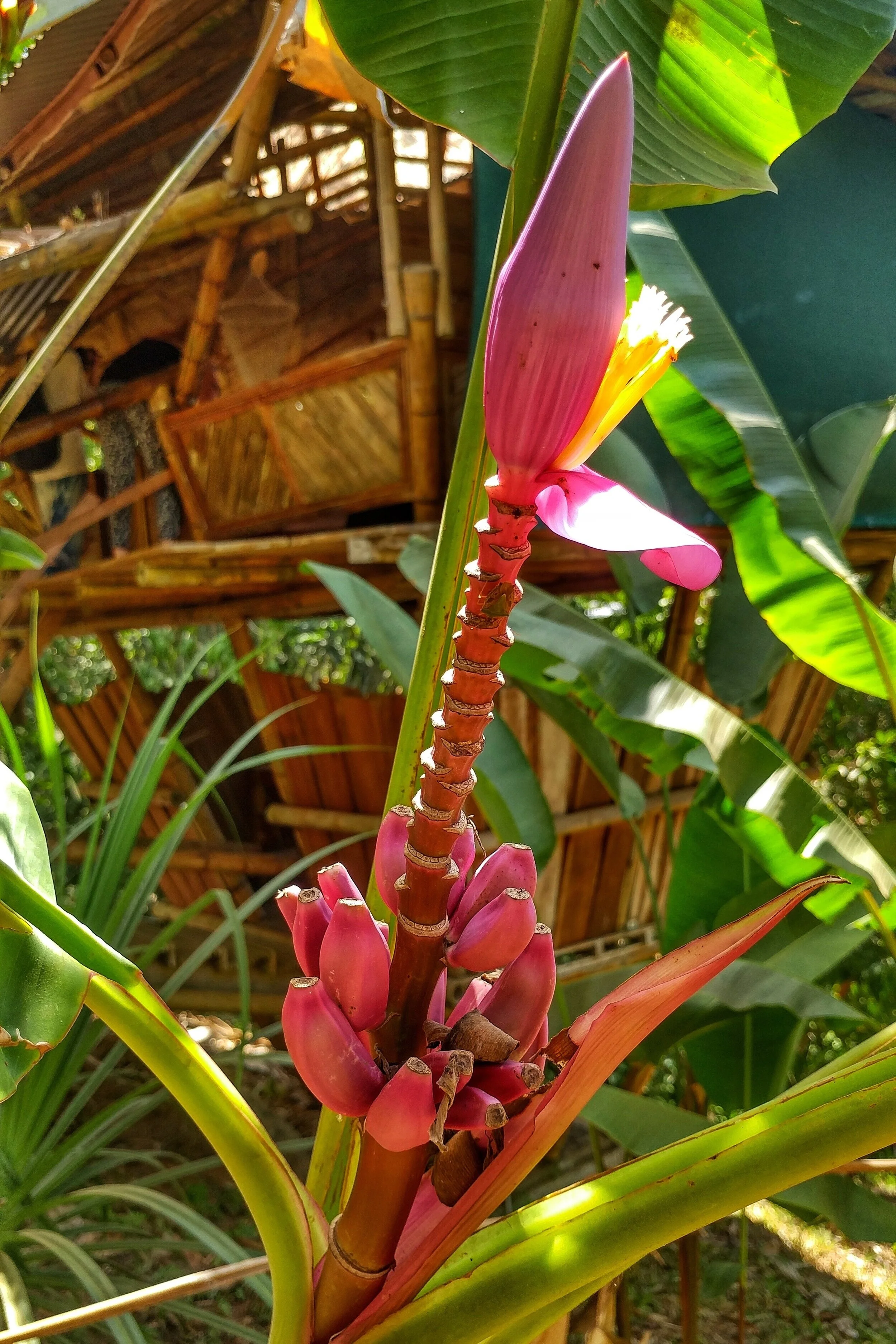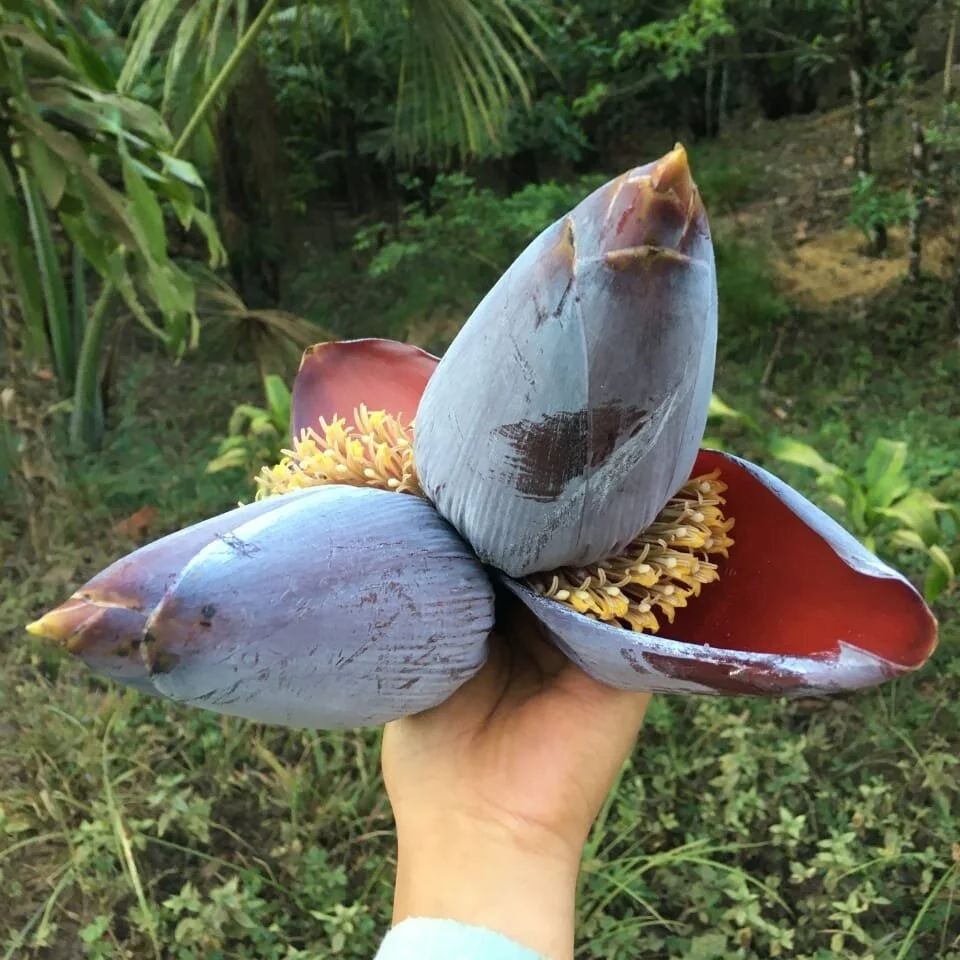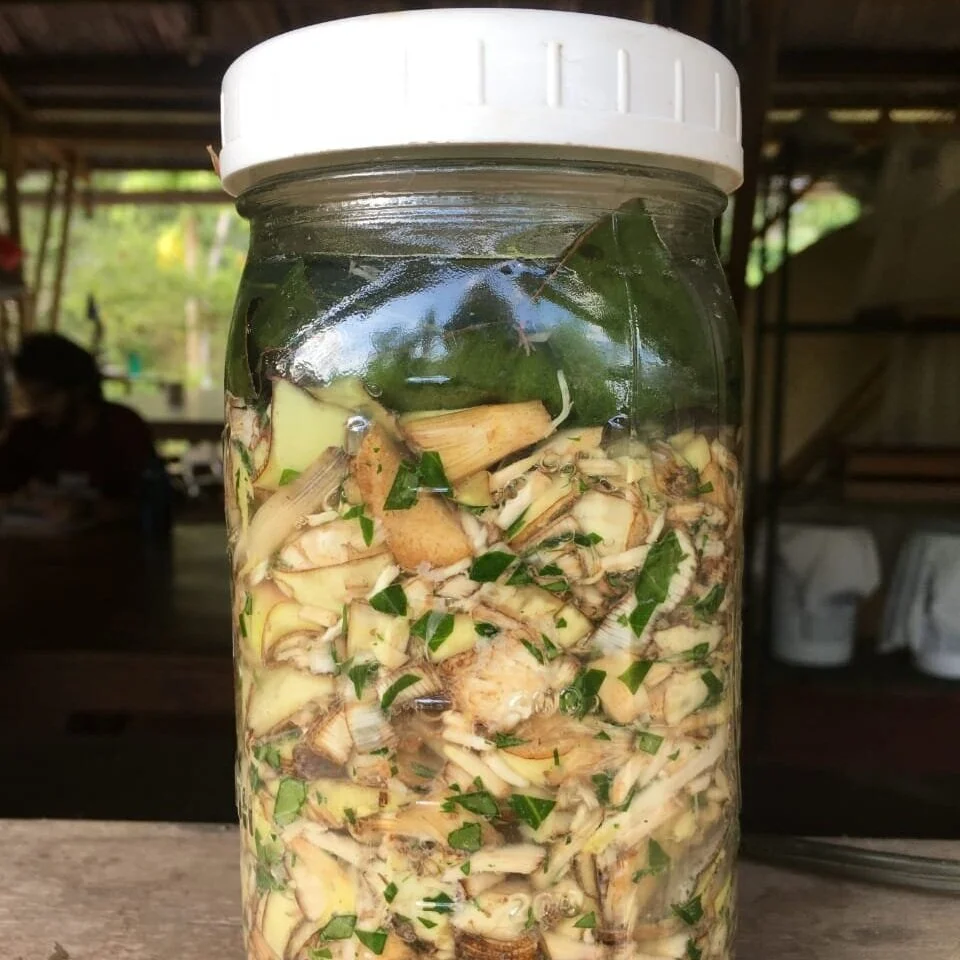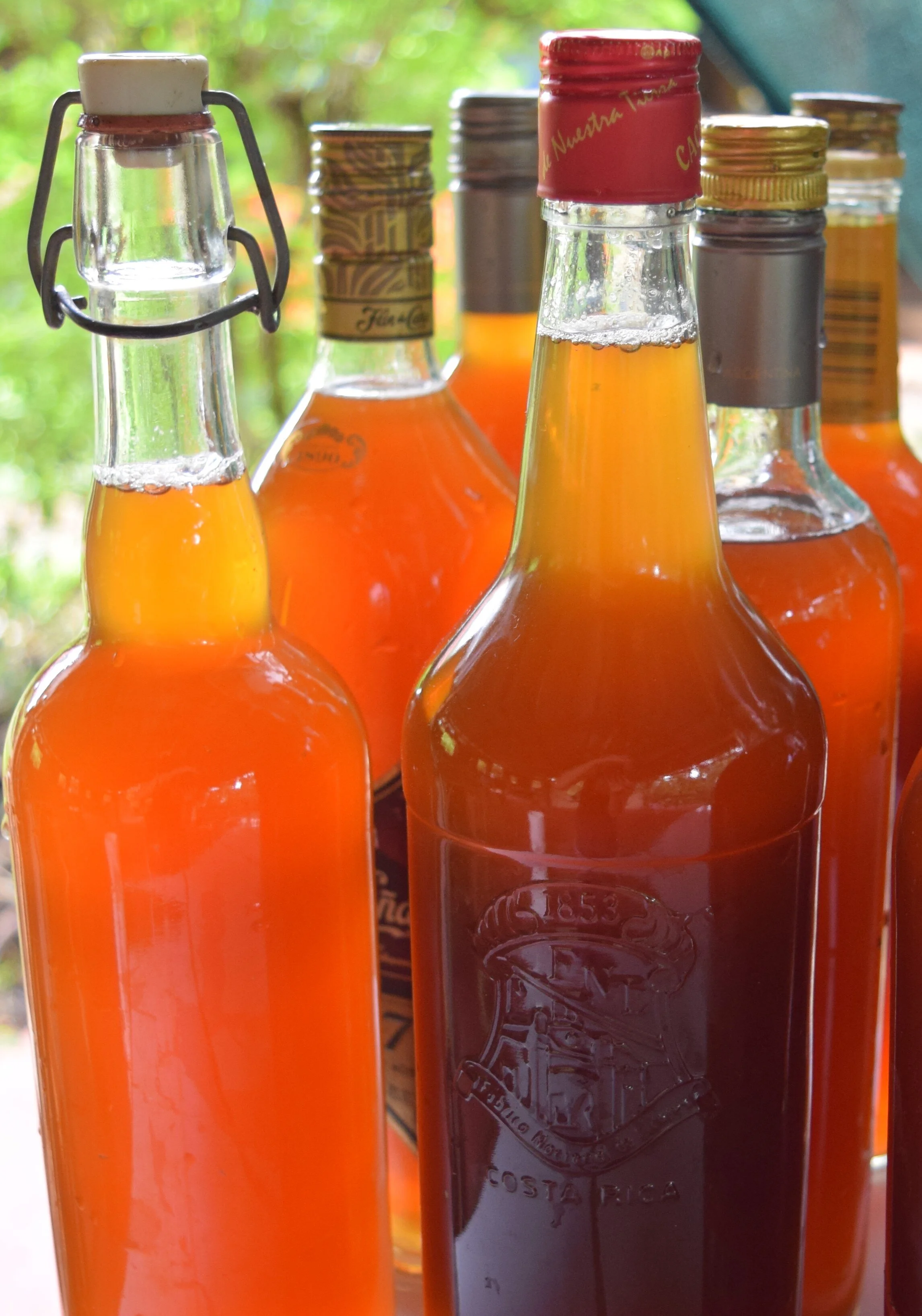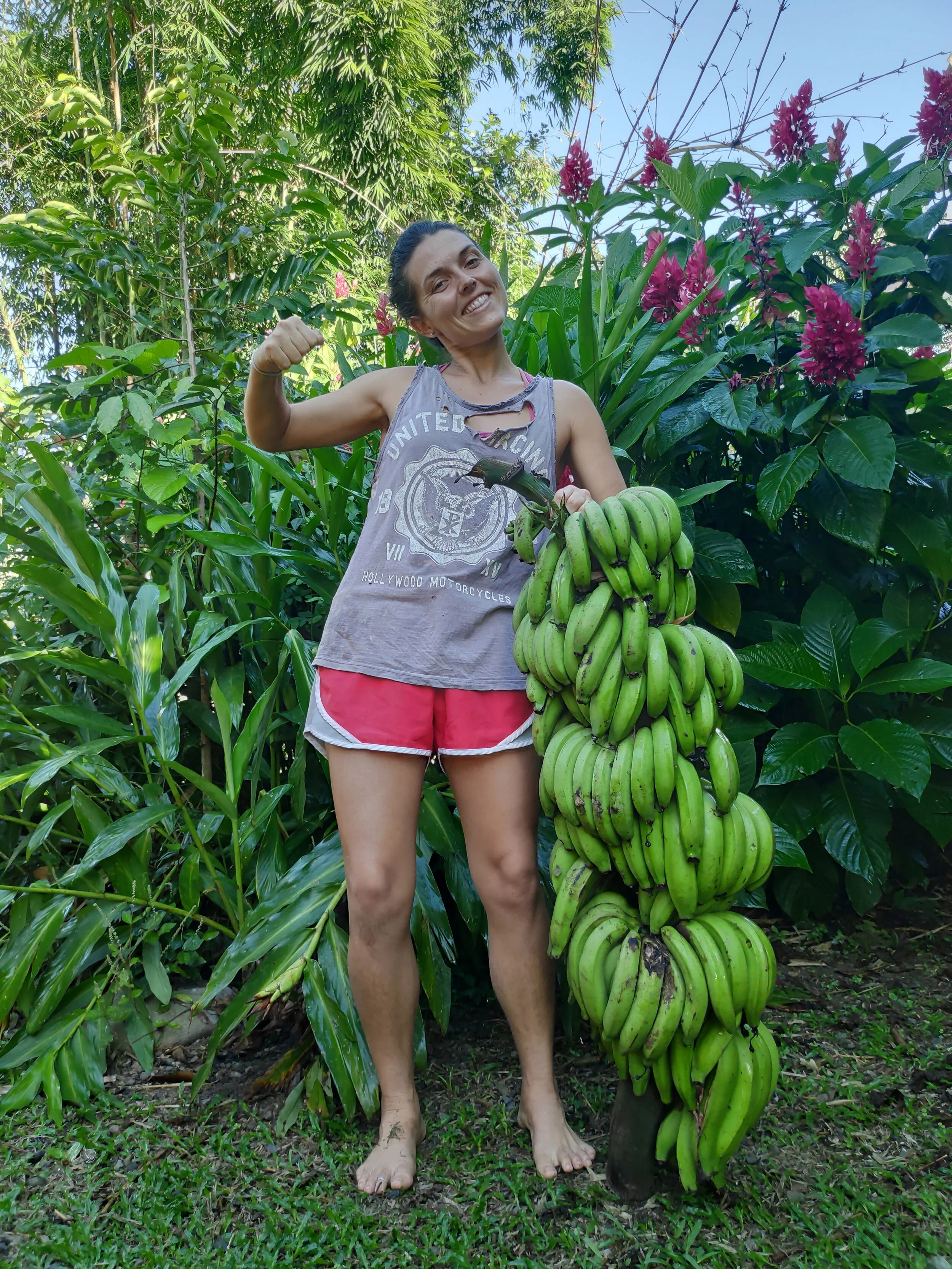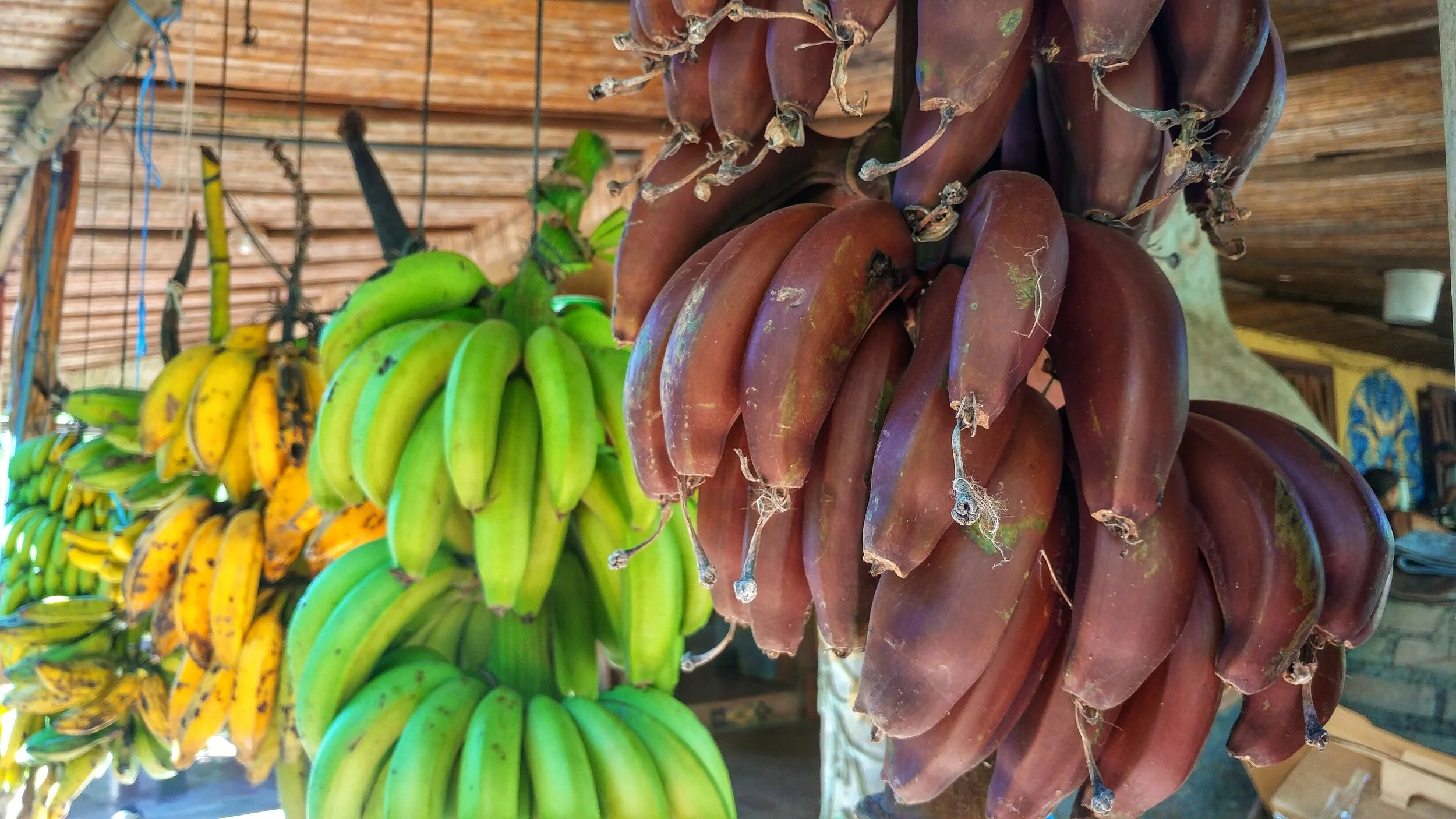10 Things You Didn't Know About the Banana
By Moanna, Apprentice 2020
They are funny looking, absolutely delicious and have so many gifts – here’s some interesting facts about the banana.
The banana with the permaculture lens on is an element that serves many more than just 10 things. Especially with the diversity of varieties that is grown here at Rancho Mastatal in Costa Rica, with 13 different types of both edible and ornamental bananas in our agroforestry systems. We are always looking at how to work with nature, and in case you already knew all of these amazing things about the banana, this blog shares how the banana can be used as a perennial staple and an easy farm to table crop.
A pink ornamental banana in front of our guest, bamboo cabin, the Hooch
10 Amazing facts about Bananas
1) Bananas can be black, red and blue!
Red and blue, long and thin, fat and short, round or softly squared, there are more than 300 varieties of the Banana, which is in the Musa family. The classic yellow banana found in supermarkets is called the Cavendish, after a British dude who found a way to grow them in greenhouses in England, making it possible for Iceland to be one of the biggest exporters of bananas. Mostly people who leave Rancho Mastatal and who live outside of the tropics, stop eating bananas because the supermarket ones (grown in monocultures far away or in greenhouses) are just not worth eating anymore.
They can be very tiny too!
2) Bananas are not a tree, but a very big herb!
Bananas are such a majestic fruit, but they do not grow on trees as they have no woody trunk or bough. The “trunk” of the banana is rather a leafstalk, as it is a dense clump of leaves ready to curl out.
3) You can eat the flower.
Like so many wonders of the world, it is both beautiful and edible! Here at the Ranch we have cooked it into a picadillo: chopped fine and cooked down with a bit of oil, salt and farm to table pepper. It is delicious. Especially if you’re a lover of the consistency of artichoke or mushroom!
A banana flower
Lacto fermented banana flower
4) The “trunk” can be turned into weaving material.
Peel the skin of the “trunk” from top to bottom, dry the strips in the sun and you’ll have very strong fiber material to make baskets, mats or belts out of. Banana fibers can be woven into an attractive silk like fabric, which in Japan and Indochina are used for clothes and hats. In Tahiti the leaves and “trunk” of the fe’i variety is used as weaving material and turned into thongs, lashings and fans!
5) You can eat the trunk.
If you are actively managing your bananas you probably cut away younger ones in the clump, only keeping the three generations (grandmother, mother and daughter) growing. In south East Asia they eat the young “trunks” as commonly as lettuce! Very thinly sliced, and then soaked in water and vinegar for a while, they add it as a fresh garnish in their soups, or turn it into a salad adding herbs, fish-sauce and toasted peanuts.
6) Green bananas are a perennial staple.
They can be used in cooking like we use the potato, simply boil them in water – the whole thing with its skin – and do as you please! You can also cut them into smaller pieces to add to a delicious stew, blend them with herbs and fry them into fritters, grate them and make a green banana hash, slice them thin and dehydrate to make banana flour. We enjoy all these creative ways to use a local food as a staple in our diets.
Green bananas getting ready to be boiled
7) Banana skin helps reduce itching.
The plant itself flourishes in tropical, hot and damp environments, mostly filled with mosquitoes – fortunately the banana skin eases the itch. I’ve tried it, and it worked!
8) Dirt or ash helps remove its sticky juice.
Harvesting bananas gives off all kinds of juices, especially when you process the green banana and flower. You can clean the machete, knifes or cutting boards by rubbing dirt or ash on it. It may sound crazy but it works.
When harvesting, rub the stem in dirt; when processing/cooking them green, use as much banana leaves/paper to protect table and other material from the juice. But once you have it on a knife or cutting board, it helps to rub any kind of dirt or ash and then wash.
9) Once they are too ripe, you can turn them into wine or vinegar!
You can never have too many bananas. Well maybe you can have too many to eat out of hand, which happens to use often. That’s when we make homemade banana vinegar! The super ripe, falling off the bunch-juicy-black-kinda ripe, means loads of sugar, which is an opportunity for yeast to have a big feast, eating the sugars and making alcohol! Permaculture principle- produce no waste.
Aging banana vinegar
10) PACKED with potassium that reduces muscle spasms very efficiently.
After one month on the Ranch, where the average daily banana intake is about 3 to 5 bananas, many find that their muscle spasms has completely disappeared. Bananas also contain the neurotransmitters, dopamine and serotonin that lifts up the mood.
Bananas make you strong too!
Do you understand why we’re going bananas over the banana? May the awe and excitement that you felt going through this list make you want to go deeper into the world of bananas. They serve well in the tropical permaculture garden or agroforestry system, provide a variety of uses, and are a nutritious food to be used as a perennial staple.
A bunch of bananas blossoming
Hope you’re as excited about bananas as we are! If you live in the right environment, go plant some, they’re super easy to plant and maintain!
want to learn more?
Join us for our upcoming Permaculture Design Course or Agroforestry Skills Course to learn about bananas and more! Learn more about all our upcoming educational workshops on our website here.
Check out these past blogs that are also about the banana


